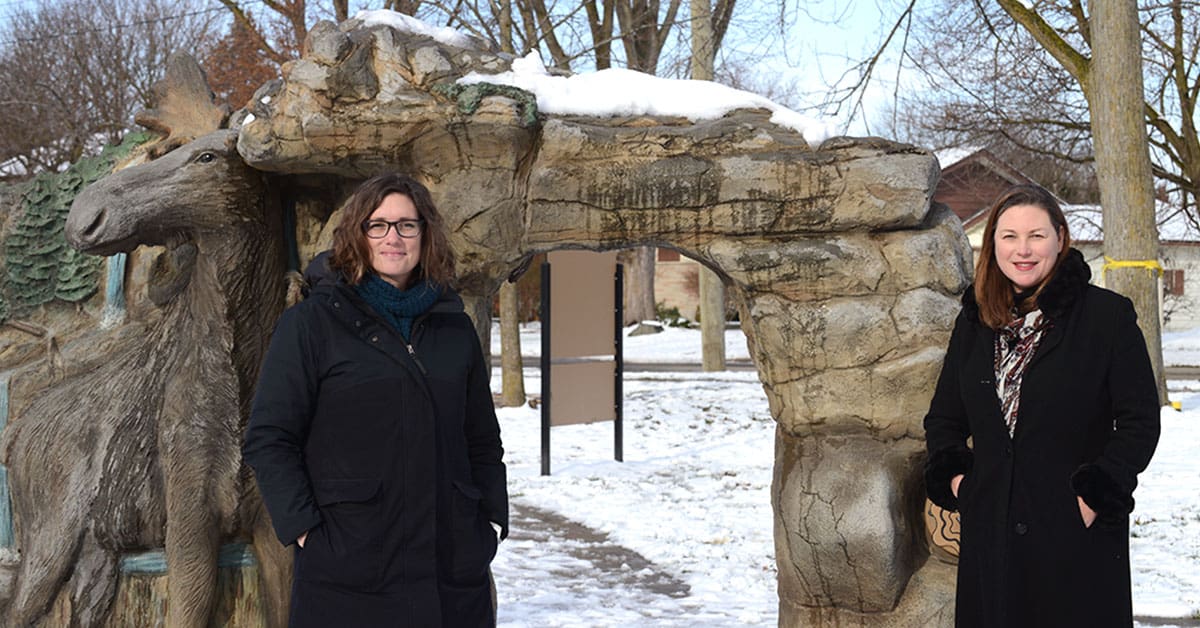The bridge is still slated for demolition, but residents looking to save the old steel span on Middlebrook Place got some good news last week when Centre Wellington Township agreed to review costing options.
The Save Middlebrook Bridge Community Action Group, which advocates for rehabilitating the structure for pedestrian use, challenged figures used to justify keeping the bridge closed for future removal. Meeting November 22, Centre Wellington councillors agreed to the group’s request for a review.
Revised costing for removing the bridge put the figure at $720,000, up from $700,000, to be split with Woolwich Township, as the bridge spans the boundary between the two municipalities.
In a report to Centre Wellington council, manager of engineering Adam Gilmore noted the environmental assessment (EA) process completed in 2020 put the cost of rehabilitating the bridge for pedestrian and cycling use at $1.6 million, while repairs to allow only for pedestrians would be $1.2 million.
Last week’s council decision applies only to a review, with no promise of reversing plans to demolish the structure.
The decision may come down to funding. Centre Wellington’s current 10-year capital plan for bridges and culverts calls for $28.5 million in spending, including $350,000 for its share of the removal of the Middlebrook bridge in 2029. A dozen of its 111 bridges and culverts are currently closed.
While the citizens’ group made a pitch to Woolwich council earlier this year, there’s been no movement away from the current plan to keep the bridge closed.
“There was no direction other than what was the preferred option in the EA, which was to remain closed and removal at some point in the future,” said Jared Puppe, Woolwich’s director of infrastructure services, noting the township will be watching to see what happens in Centre Wellington.
“I guess their staff will be providing a report to their council – we’ll wait and see what transpires out of that before anything needs to be discussed again with our council.”
Aware that Centre Wellington’s decision to reopen the file might not change the outcome, the community group nonetheless welcomed the move.
“We’re glad they voted to reconsider their decision, which it had to be clear to our group doesn’t mean that they will change their decision, only that they are willing to reconsider it, which is massive,” said Stephanie Lines-Toohill, a community member and a representative of the action group. “I’m happily surprised we got this far.”
She said Woolwich’s handling of the Peel Street bridge serves as a good model for the Middlebrook situation, pointing to the heritage value and the feedback from the public calling for the retention of a route for hikers and cyclists.
With the Peel Street bridge, the township’s environmental assessment process led to a report to keep the century-old steel bridge closed with an eye towards future demolition, just as with the Middlebrook structure. In the case of the Winterbourne bridge, however, the public pushed for the rehabilitation option to keep the structure in place and open for pedestrian use, with Woolwich council eventually coming on board.
Woolwich this week wrapped up the latest public feedback session for the design of the rehabilitated Peel Street bridge, with Lines-Toohill drawing inspiration from the online presentation.
“I’m very excited. The designs are beautiful. They did a really good job with presenting the options for designs, with a really accessible link on YouTube. I think they did a fabulous job of making that accessible,” she said. “I’m hoping that helps lay some groundwork in the discussion about the Middlebrook bridge, because they’ve already done so much work towards figuring out how to rehabilitate Peel Street.”
As with Peel Street, which dates back to 1913, Middlebrook is a steel truss bridge. The Chambers Bridge was originally constructed in approximately 1845 as a wooden span over the Grand River. Subsequently, that bridge was replaced at the same location in 1905. The Middlebrook steel truss bridge (#180160), as it is currently known, was originally constructed in the early 1930s and was moved into its current location in 1946 as a replacement for the 1905 structure. The bridge has undergone a number of repairs in the past 30 years, and was previously closed from 1994 to 2002 before being reopened until 2013.
For now, the community group is waiting for Centre Wellington’s review to be completed before deciding on its next steps, said Lines-Toohill.
In Woolwich, the consultation process with the neighbouring municipality is likely to come after the holidays, Puppe suggested.
“I think Centre Wellington staff and township staff will likely be having some discussion, but I suspect it’s not ’til the new year. Nothing’s been set at this point,” he said.









